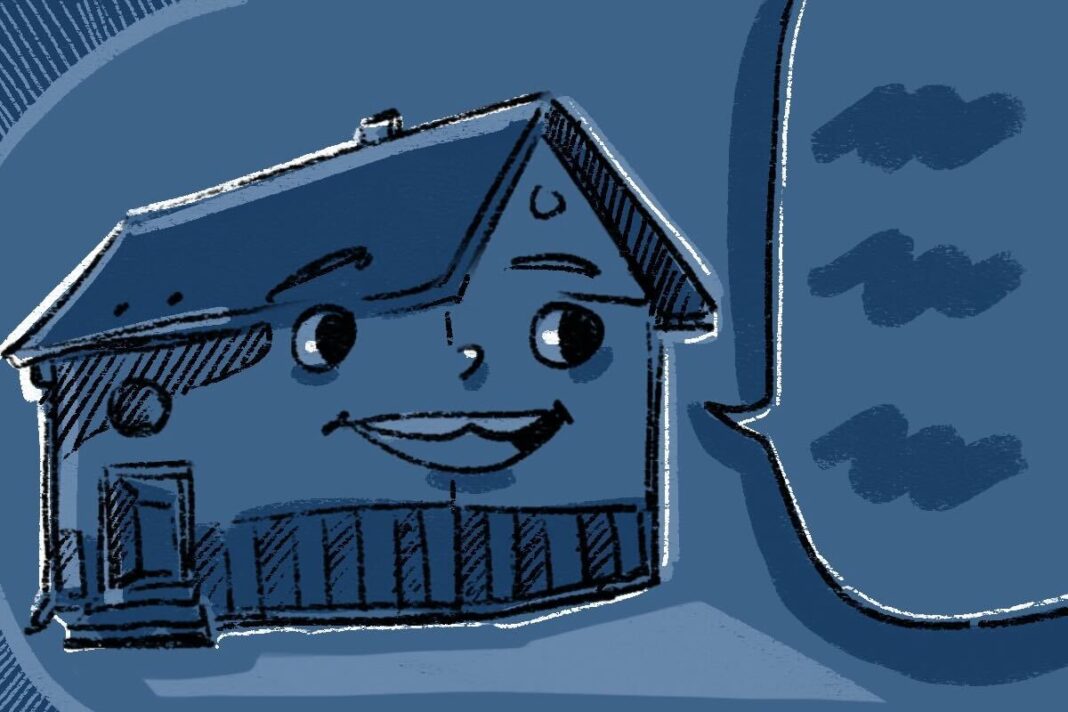Every weekend, Éliane Laberge makes the 10-minute drive to her mother’s house in the Hull neighbourhood of Gatineau. The pair would go shopping for groceries or pick up medication at the pharmacy.
Laberge, 36, started caring for her 74-year-old mother Martine Savard about five years ago. Her caregiving responsibilities range from managing her mom’s medical appointments to supporting her financially.
“It’s a lot of just me being patient and repeating and offering my support as best as I can while also respecting my own boundaries,” she said.
Savard has experienced difficulty concentrating, lack of judgement and memory loss. While she hasn’t been formally diagnosed with any conditions, Laberge said her mother has a family history of mental illnesses such as schizophrenia and bipolar disorder.
At the start of the COVID-19 pandemic, Laberge said her mother fell and ended up in the hospital.
“That was a big scare,” Laberge said.
As a result, Laberge is focusing her attention on hiring a professional caregiver to provide medical care and assist her mother with daily activities such as cooking and cleaning.
Her mother expressed the wish to remain in her home for as long as possible. “I don’t want to go live in an older person’s home,” Laberge recalled her mother saying.
Like Savard, over 90 per cent of Ontario seniors want to age in place, according to a new study commissioned by Home Care Ontario. Aging in place refers to when support is brought to seniors in their homes, instead of relocating them to a new place such as a hospital or care home.

A team of researchers, including Knoefel, are developing smart home systems to help older adults age in place. The research is part of Sensors and Analytics for Monitoring Mobility and Memory, a collaboration between Carleton University, the Bruyère Research Institute and AGE-WELL Network of Centres of Excellence. Bruyère and AGE-WELL are two organizations dedicated to helping aging adults maintain healthy and independent lifestyles.
While family members like Laberge provide care for their loved ones, this responsibility can be challenging to balance with the management of their own lives. Seniors who want to age at home, instead of long-term care, require solutions other than family care, Knoefel said.
“Some technology … can be the eyes and ears of the family member or the home care provider,” he said.
Inside the technology
Bruce Wallace is one of the lead researchers and the executive director of the SAM3 AGE-WELL National Innovation Hub at Carleton.
Wallace has turned his home into a testing lab for his research. At the start of the pandemic, he moved over 100 sensors from his labs at Carleton and Bruyère to his house.
Under his mattress is an electronic pad connected to a computer that tracks when someone gets out of bed. Sensors in the hallway monitor where they are heading.
For older adults living with dementia, sensors can alert their caregivers if they go outside, Wallace said.
He’s also developing a pre-recorded voice on a home speaker that lets seniors who are lost around the house know where they are. The senior’s care partner, such as a friend or family member, would record the message so that the senior can be guided by a familiar voice speaking in their first language, Wallace said.
“Something like ‘Honey, it is the middle of the night, please return to bed,’” he said.
Wallace added that the home system can help caregivers rest at night without worrying their seniors might wander and potentially hurt themselves.
“The person living with dementia has got a little more independence at night with a safety net around them and their care partner gets left sleeping,” he said.

“When my patients come to the clinic, and I go, ‘Did you have a fall this week?’ They may not remember, or they may not want to tell me the truth,” he said. “If I have data—the activities at home—I’m going to provide better care.”
The pressure-sensitive mattresses detect how a person gets up from bed, which can indicate mobility issues, Knoefel said. These challenges can range from seniors being unable to walk on their own to having difficulty staying balanced while standing up.
“Are they getting up straight? Or are they twisting up? If the way the person is getting out of bed is changing that might be an early warning that their mobility is getting worse,” he said.
Doctors can then use that information to quickly intervene and find solutions that will prevent seniors from falling, Knoefel added.
Benefits of using the technology
Laberge said she would like access to this kind of tech for her mother.
“It would reassure me to know there are sensors … that can notify me,” she said. “I would feel much more secure and calm that she can continue to live in her space for many more years.”
In addition, innovative home technology can help remove barriers for seniors with disabilities, Peggy Edwards, co-chair of the Age-Friendly Housing Committee of Ottawa’s Council on Aging, said.
Those with cognitive impairments or mobility challenges can use smart tech systems to control lighting in their homes, make phone calls or remind them to take their medication, she said.
Edwards, who is 75, said she relies on her phone’s voice assistant to stay informed and socially connected.
“Siri plays the music I want. She tells me the weather. She helps me FaceTime with my grandchildren,” she said.
Another challenge older adults face is finding age-friendly houses, Edwards said. The Council on Aging has been lobbying the provincial government to create affordable housing for seniors as well as funding co-housing projects, she said.
“[Older adults] don’t necessarily want to stay in that same house because it may be too big for them now. So, they’d like to move to an apartment or a smaller place,” Edwards said.
“And the problem is there just aren’t available, affordable, accessible housing.”
Digital literacy for seniors
To address the technology gap between generations, Edwards said developing programs to help seniors operate these high-tech systems can be helpful.
ABC Life Literacy Canada is a not-for-profit organization that provides free resources to adults who want to improve their digital literacy skills.
Emily Sitter is a therapeutic recreationist at Baycrest Centre, which specializes in care for older adults including independent living and long-term care. Sitter works closely with dieticians and social workers to tailor programs that meet residents’ interests and needs.
She said it’s important to listen to seniors when developing systems aimed at helping them.
“You learn best from asking the residents what they’re looking for,” she said. “Being able to validate their feelings is huge.”
Looking at how their abilities have changed can also help seniors take on new responsibilities and adapt to the changes associated with aging. Someone who can no longer cook their own meals can be encouraged to set the table instead, Sitter said.
As they progress with their respective research projects, both Knoefel and Wallace hope to put this technology on the market as soon as possible.
For Laberge, this can’t come soon enough. She said these high-tech tools could help ease the stress that comes with caregiving.
Having reached out to support groups for caregivers, she added that setting boundaries has improved her health and her relationship with her mother. She hopes that this new technology will help her do that.
“As a caretaker, I can’t carry my mom on my back,” Laberge said. “I have to hold her hand and walk with her side by side.”
Featured graphic by Angel Xing.






